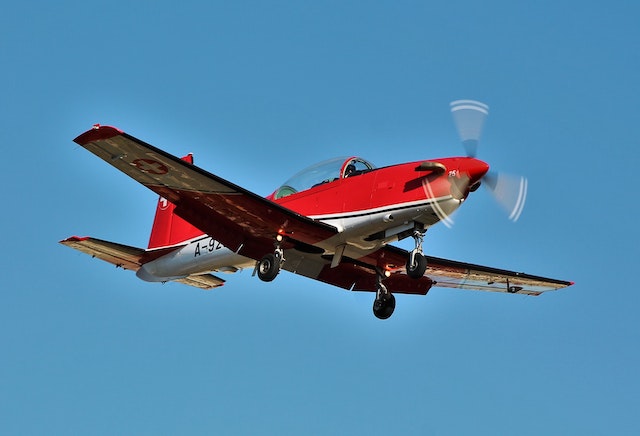Compact airplanes such as air ambulances usually prefer turboprop engines. These are commonly found in subsonic (slower than sound) aircraft. The engines are capable of delivering speeds of around 300 knots. That said, propjet air ambulances can cross well over 400 knots of speed.
How Do They Work?
Explaining the workings of the engine in layman’s terms, the air is drawn into the intake of a turboprop engine and then compressed. In the combustor, fuel is mixed with compressed air, and combustion is triggered. This results in hot gasses that spin the propeller. Almost all of the turbine power in a turboprop engine is used to drive the propeller. It is interesting to note that at speeds of less than 500 miles per hour, these engines are capable of outperforming turbojet engines in terms of propulsion efficiency.
In turbojet engines, the air is sucked into the front, compressed, and heated by the compressor. Fuel is then added in a manner similar to that of a turboprop, and the mixture is then ignited in the combustion chamber. The resultant hot air is pushed through the turbine, driving the compressor. The energy is also used to create thrust. It must be noted here that the pressure created in this manner can be twice the pressure outside, making for good lift and movement.
Advantages of a Turboprop Engine for Air Ambulances
The main advantage is that it is lightweight, which means it takeoffs more efficiently and can climb in a jiffy. This is ideal for air ambulance rescues where the landscape includes mountains. It is a much safer and more efficient alternative to turbojets.
Also, it can land on shorter and not-so-well-maintained runways. Jets typically need a runway of 5,000 feet whereas turboprops just 3,200, making them ideal for small landing areas, which is typically what air ambulances encounter. Turboprops can also operate on grass airfields and unimproved airstrips.
Finally, since the cost is a consideration for most air ambulances, given the current insurance-approval landscape, service providers naturally veer towards turboprops since they are more fuel efficient.


